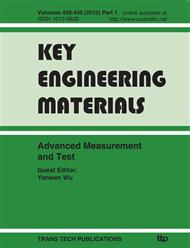p.269
p.274
p.280
p.286
p.292
p.298
p.304
p.309
p.315
Optimal Control for Thrust Vectoring Unmanned Aerial Vehicle
Abstract:
In this paper the application of linear quadratic (LQ) optimal control based techniques to a thrust vectoring unmanned aerial vehicle (TV-UAV) control problem is considered. A general nonlinear dynamic model of the TV-UAV is built, which is different from the common UAV. The longitudinal and lateral linearization models are derived in a benchmark flight state. Two thrust deflections are considered as control variables, associated with the rudder control variables. LQ optimal control method based multivariable control system is designed for the attitude stability control problem. Simulations of a nonlinear model described UAV is carried out, results of which show the superiority of the hybrid control strategy, and also show that the TV-UAV has better properties than the common UAV, in the aspects of anti-disturbance and control efficiency.
Info:
Periodical:
Pages:
292-297
Citation:
Online since:
June 2010
Authors:
Price:
Сopyright:
© 2010 Trans Tech Publications Ltd. All Rights Reserved
Share:
Citation:


